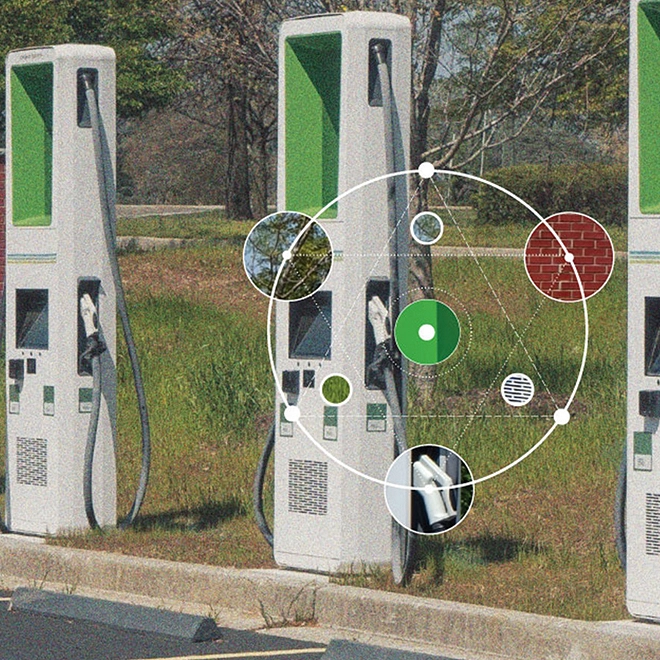EV Charging Infrastructure - The Next Frontier
The uptake of EVs is gaining pace… and so is public charging demand.
To meet the projected demand for EV public charging, we will need to build eight new public EV chargers every day from now until 2033, on average. This presents an opportunity for organisations to consider using their parking footprint to provide a significant share of the expected charging demand.
As of mid-2023, there are approximately 130,000 electric vehicles (EVs) across Australia, representing less than 1% of the total passenger vehicle fleet. It should come as no surprise then that with more affordable EV models available on the market, and the need to decarbonise intensifying, EV uptake is rapidly accelerating. EVs made up 8.4% of new vehicle sales in the first half of 2023, almost five times higher than the same period just one year earlier.
This trend is only expected to continue, with EV uptake projected to increase from 8.4% of new passenger vehicle sales in H1 2023, to 43% by 2033. This uptake will see a dramatic shift in the composition of vehicles on Australian roads, with the number of EVs expected to rise to approximately 2.5 million within the next 10 years.
The rapid transition of the transport fleet from internal-combustion-engine (ICE) vehicles to EVs will dramatically increase demand for EV charging, with the total energy demand from EVs forecast to reach 3,570 GWh per year by 2033. While the majority of charging in Australia is expected to occur in private homes, a significant proportion of EV users will be heavily reliant on public chargers. To service this demand, 27,500 new public EV chargers will be required by 2033, an eight-fold increase on current public charging capacity.

To meet the projected demand for EV public charging, we will need to build eight new public EV chargers every day from now until 2033, on average. The vast majority of this demand is expected to arise in major cities, where EV uptake is likely to be higher and where access to at-home charging is lower.
This presents an opportunity for organisations with an existing parking footprint in these areas to provide a significant share of the expected charging demand. Careful consideration and identification of ideal locations which optimise usage, visibility as well as security are particularly important to improve the financial viability and sustainability of these assets. Coordination of infrastructure deployment is also key to building a cohesive and successful charging network while avoiding duplication of resources, particularly while EV uptake is still gaining pace.
The Deloitte EV Charger Commercial Model
Deloitte have developed an EV Charger Commercial Model, allowing for rapid, localised demand and financial analysis to be performed for organisations that are considering rolling out EV charging infrastructure anywhere in Australia.
The next 10 years of EV charging
- Now: Strategic rollout
Starting now in the planning and delivery of essential charging infrastructure will prove critical to responding to this demand and enabling the nationwide transition to EVs, particularly if the location of chargers aim to maximise usage and avoid unnecessary duplication of resources. - Next 2-5 years: Steady rollout
Increasing uptake will see over half a million EVs on Australian roads by 2028. Without growth in public EV charging , this will result in a shortfall of over 5,300 public chargers nationally. NSW alone represents almost 50% of the expected shortfall. - 5+ years: Rapid rollout
With the EV transition well and truly underway by this point, the uptake rate of EVs is projected reach 43% of new sales by 2033. To meet the demand for EV charging there will need to be at least 31,500 public EV chargers, the equivalent of 8 new chargers every day for the next 10 years.



